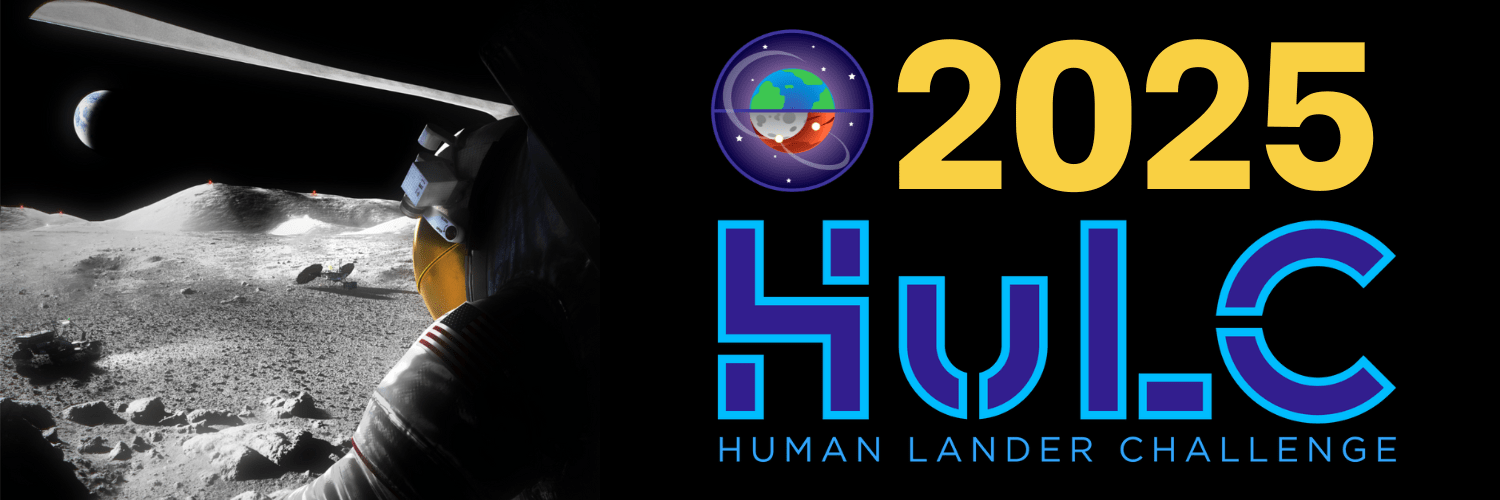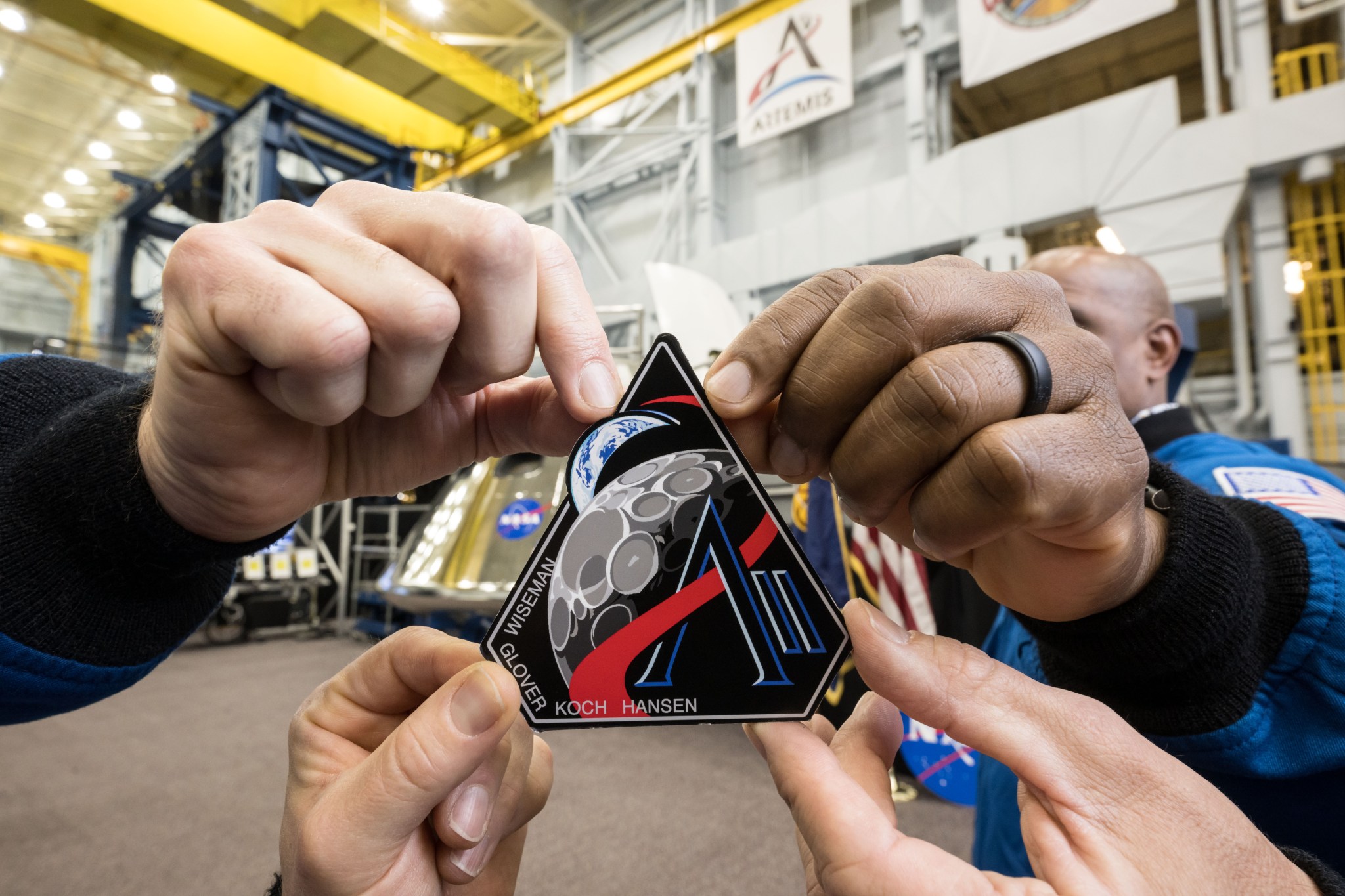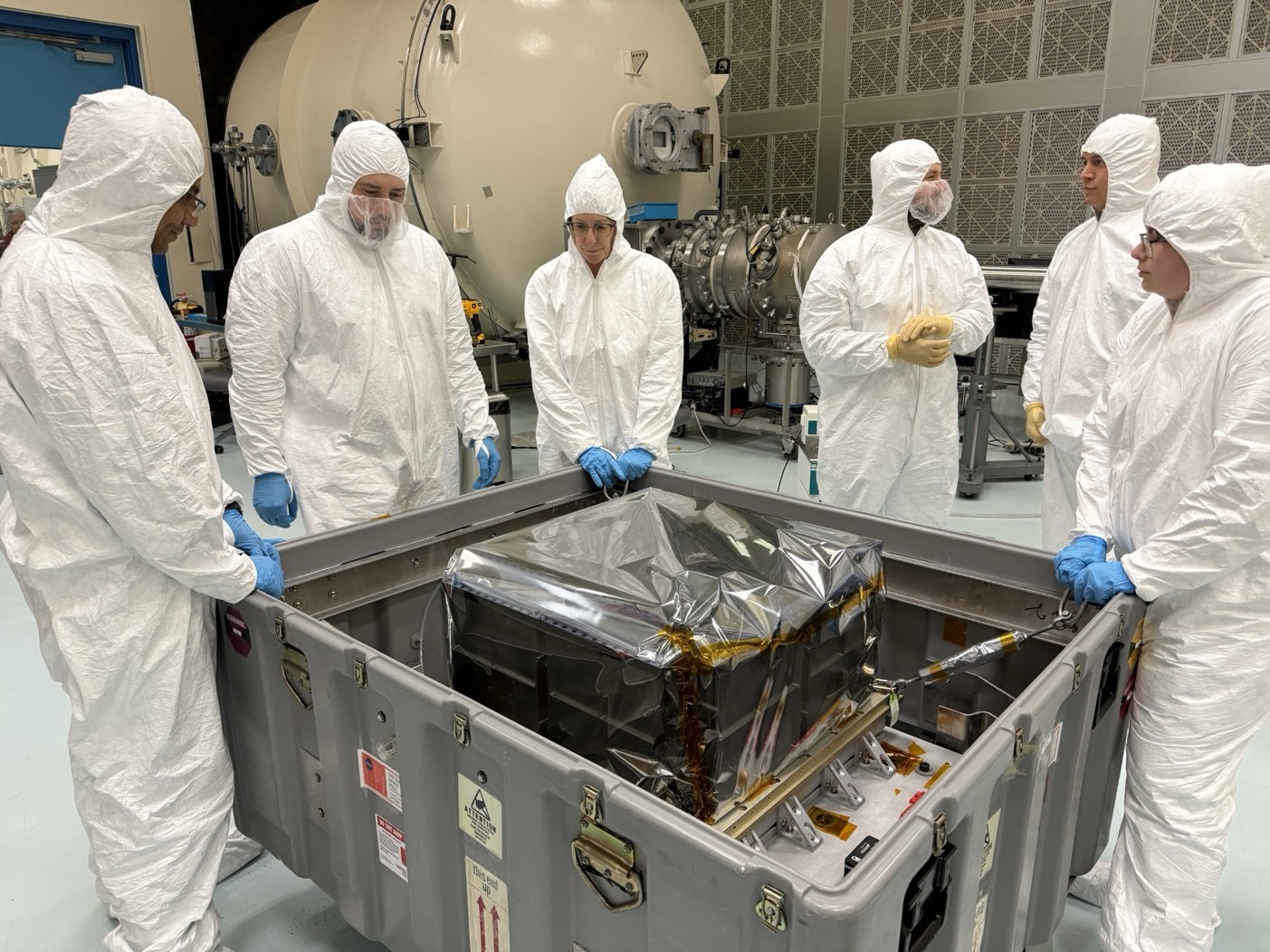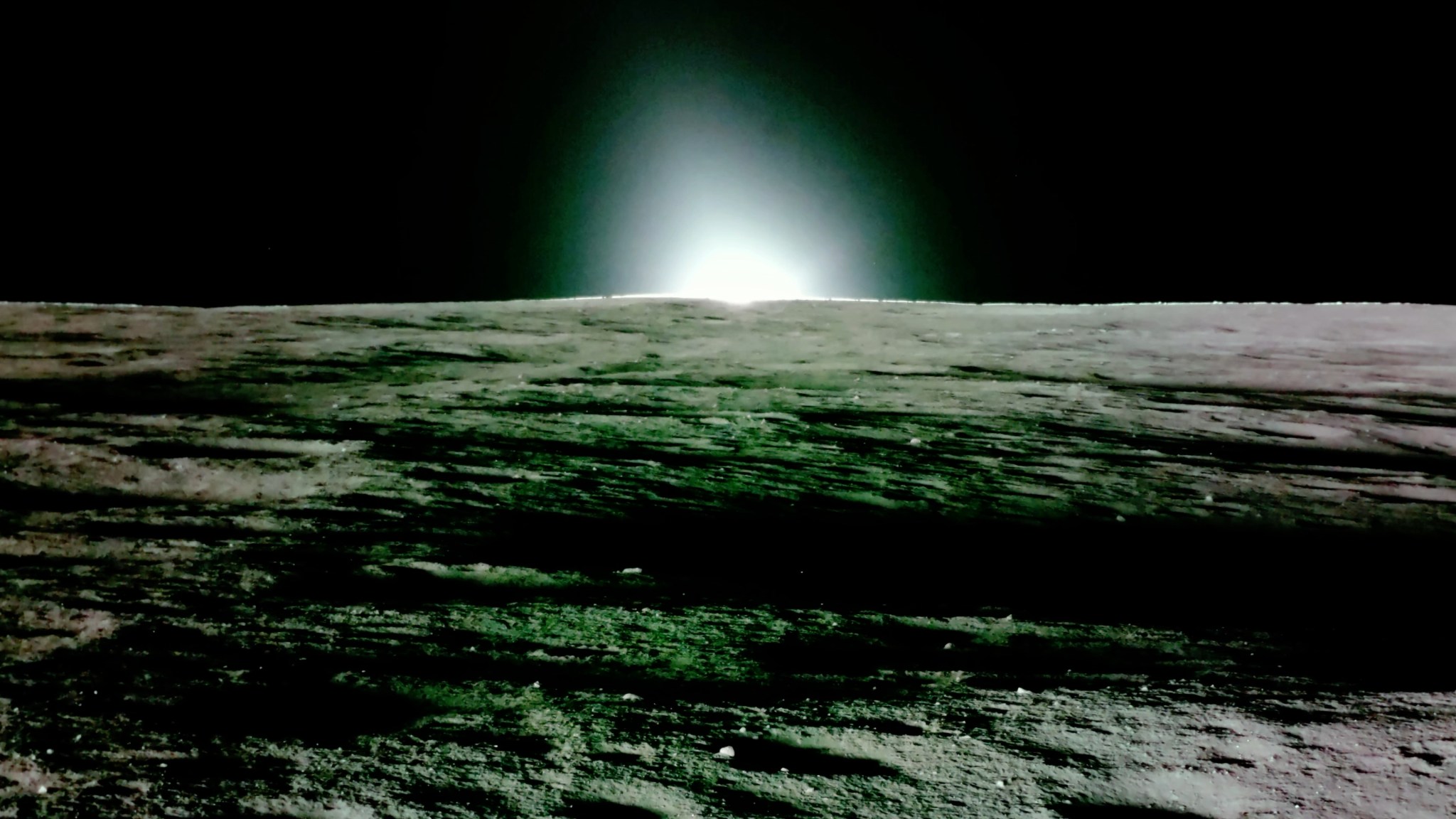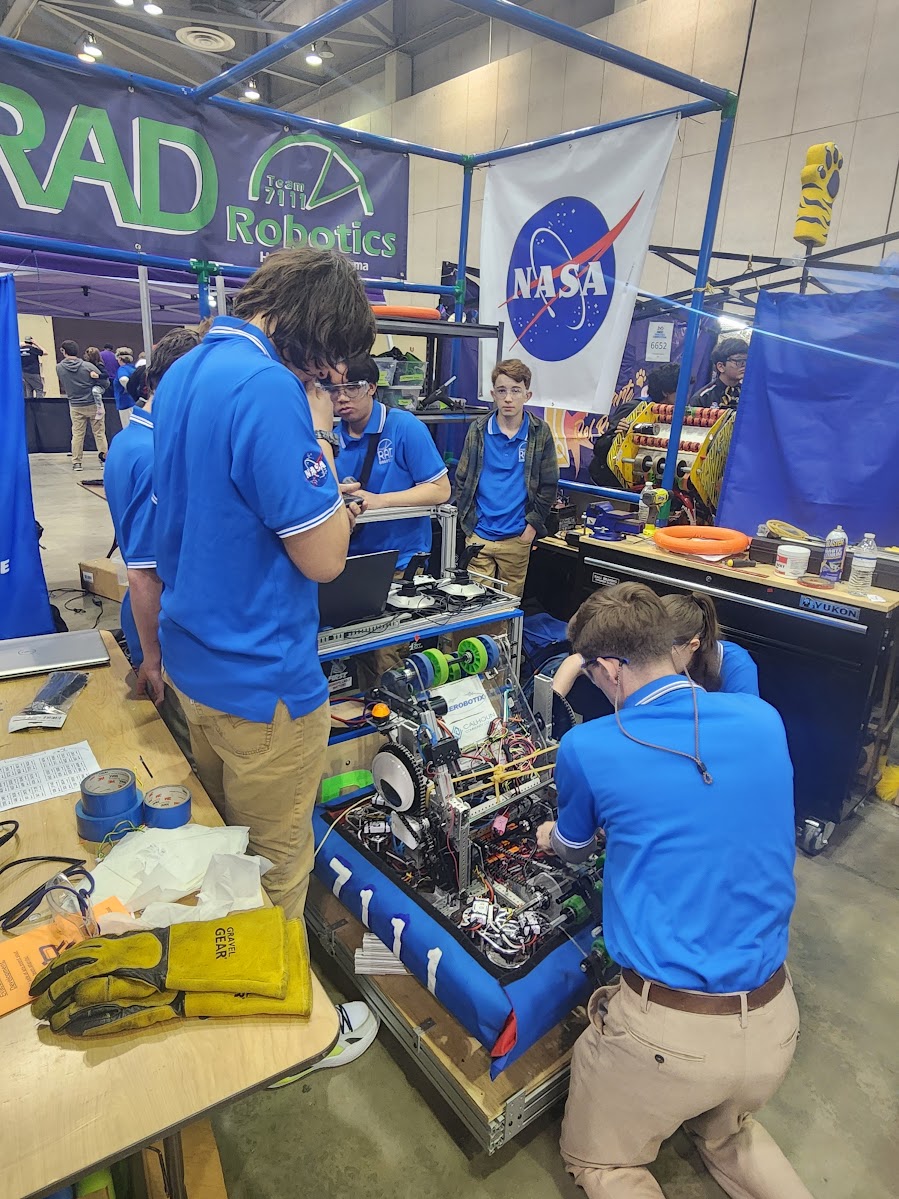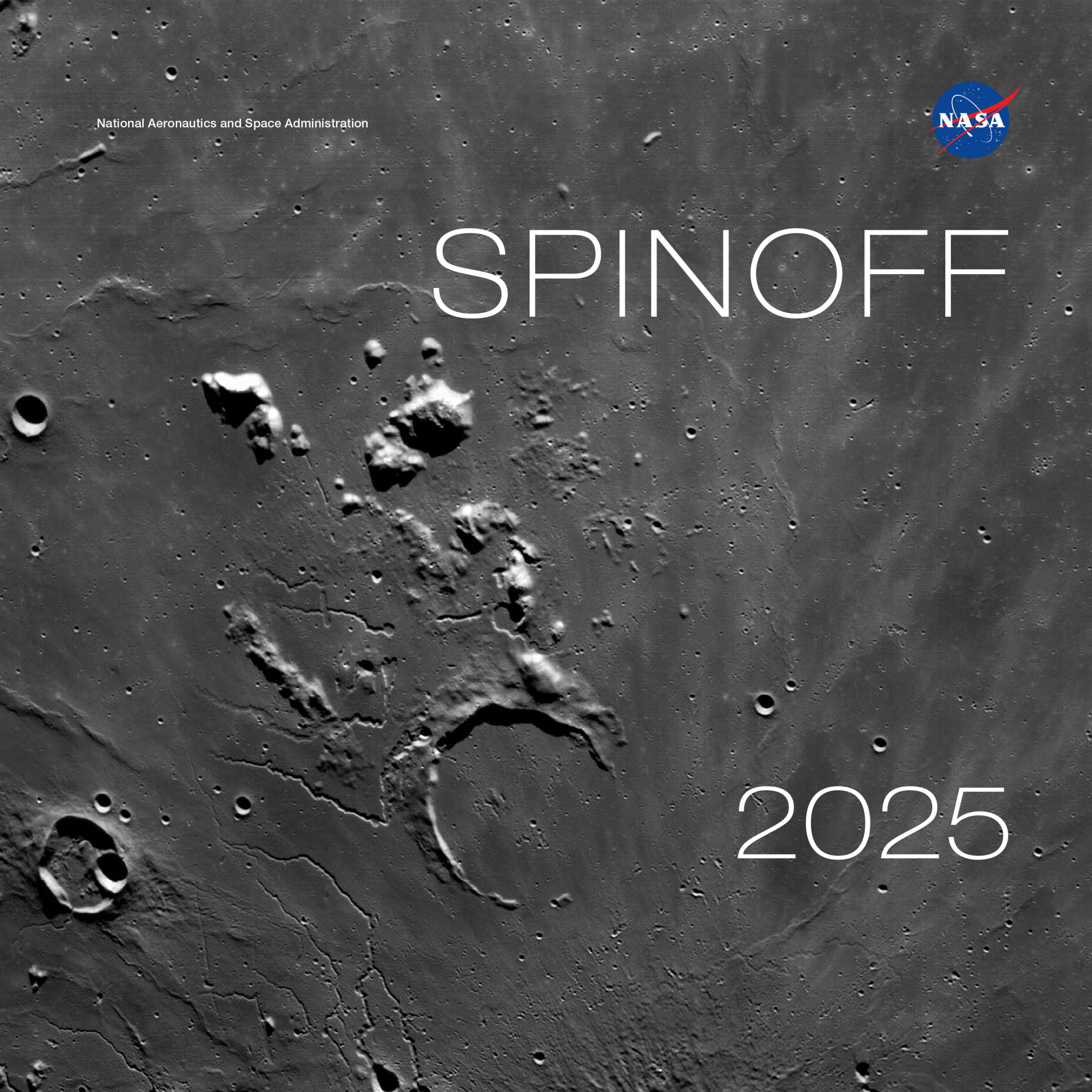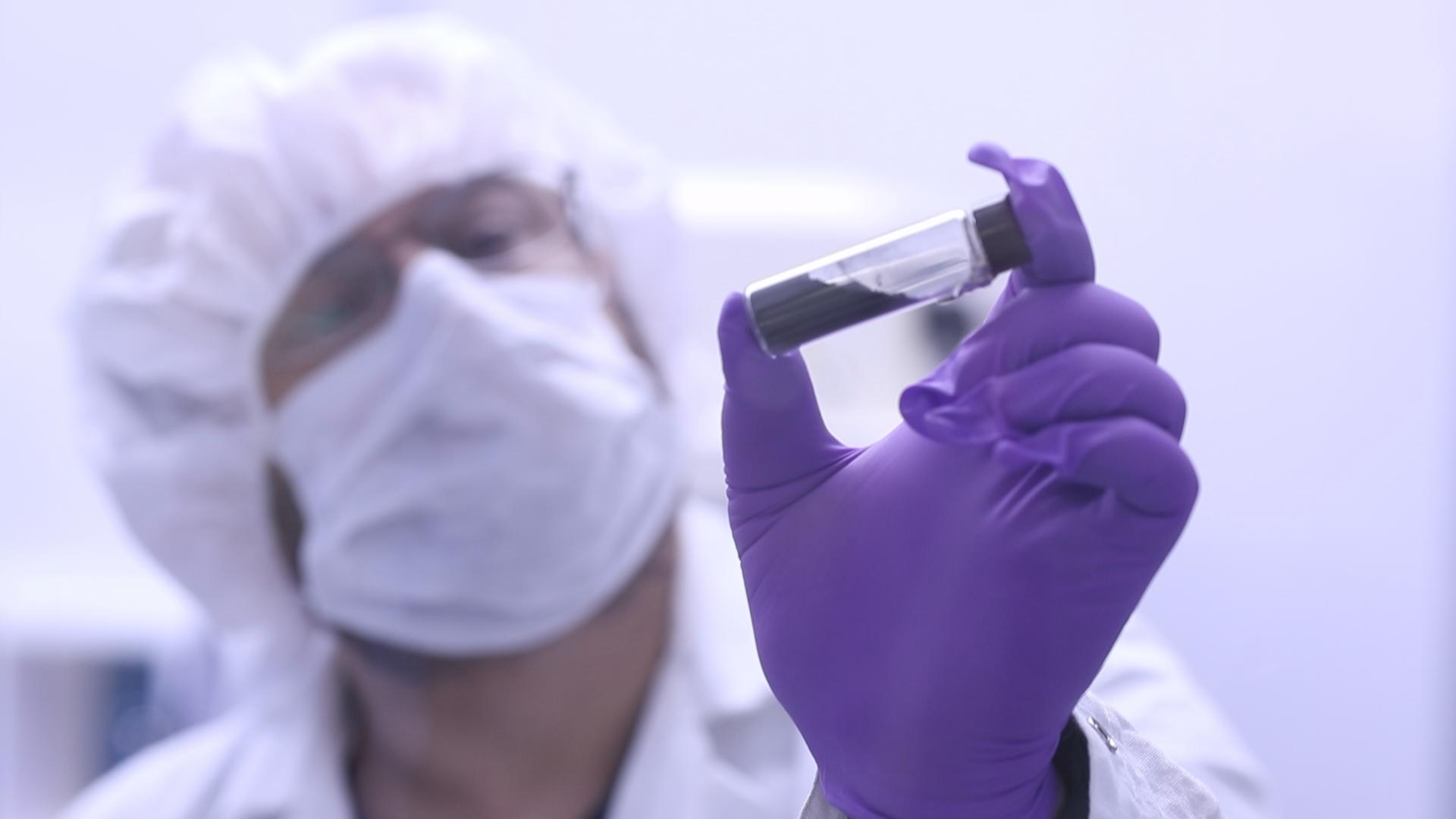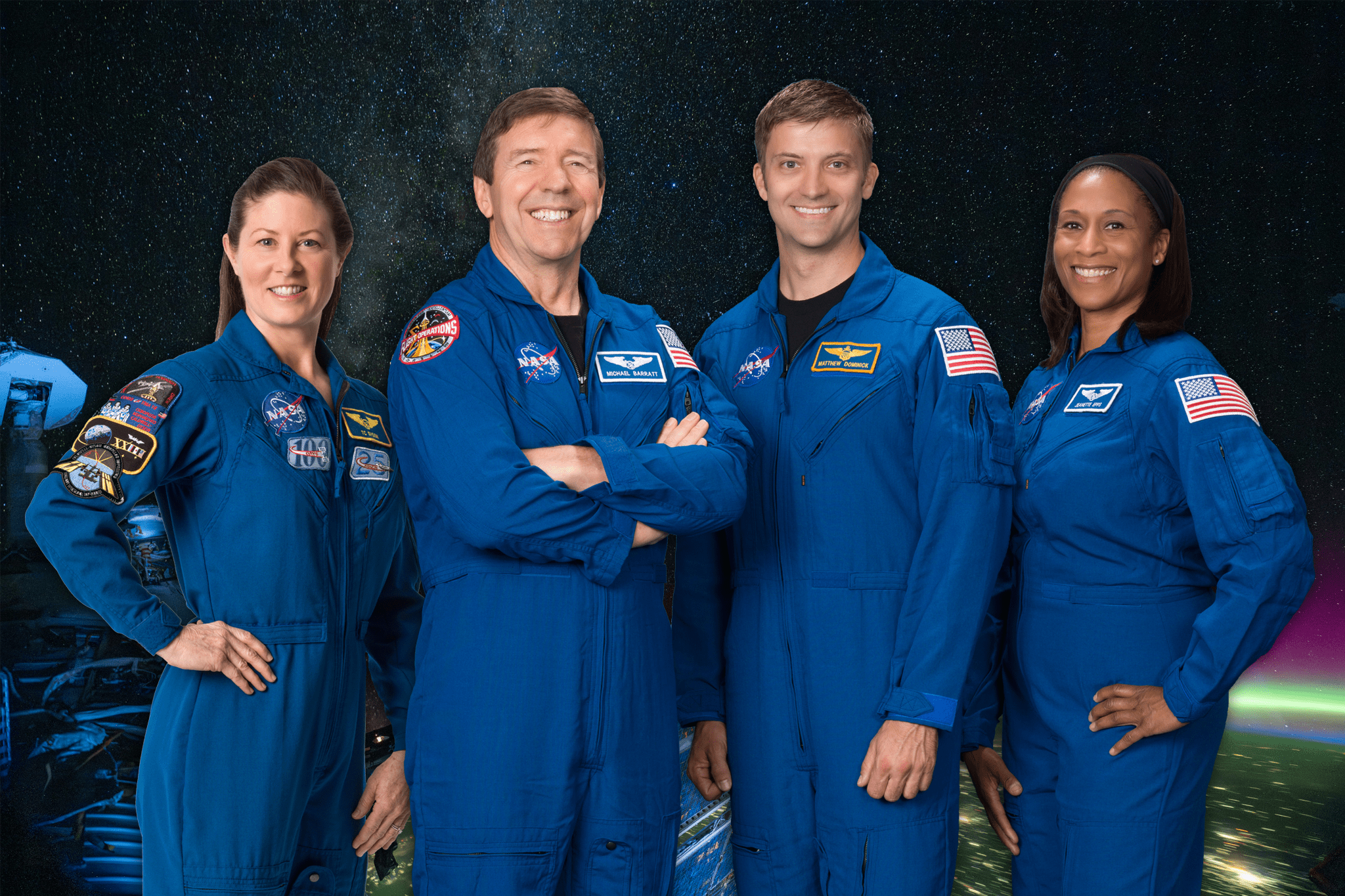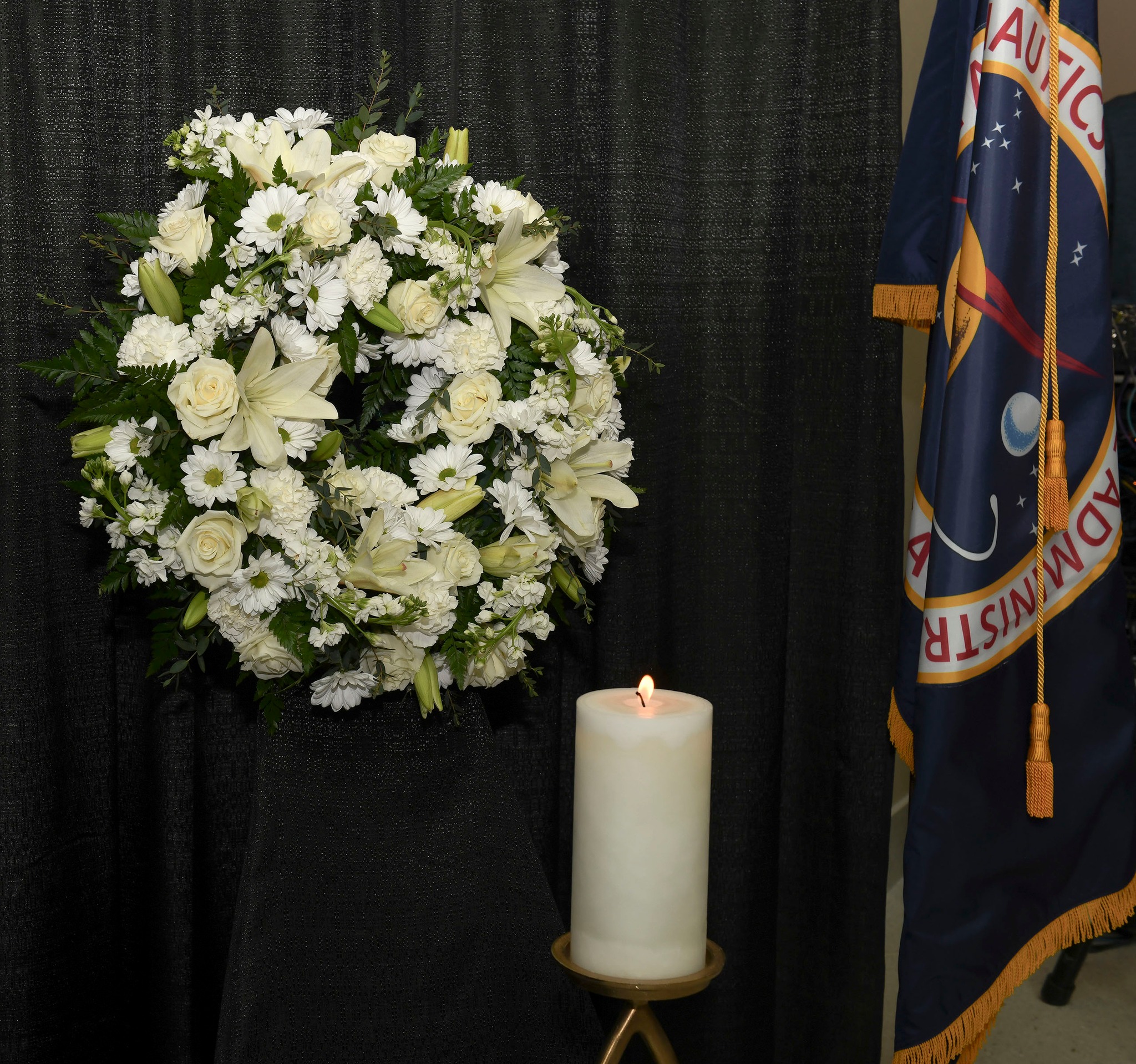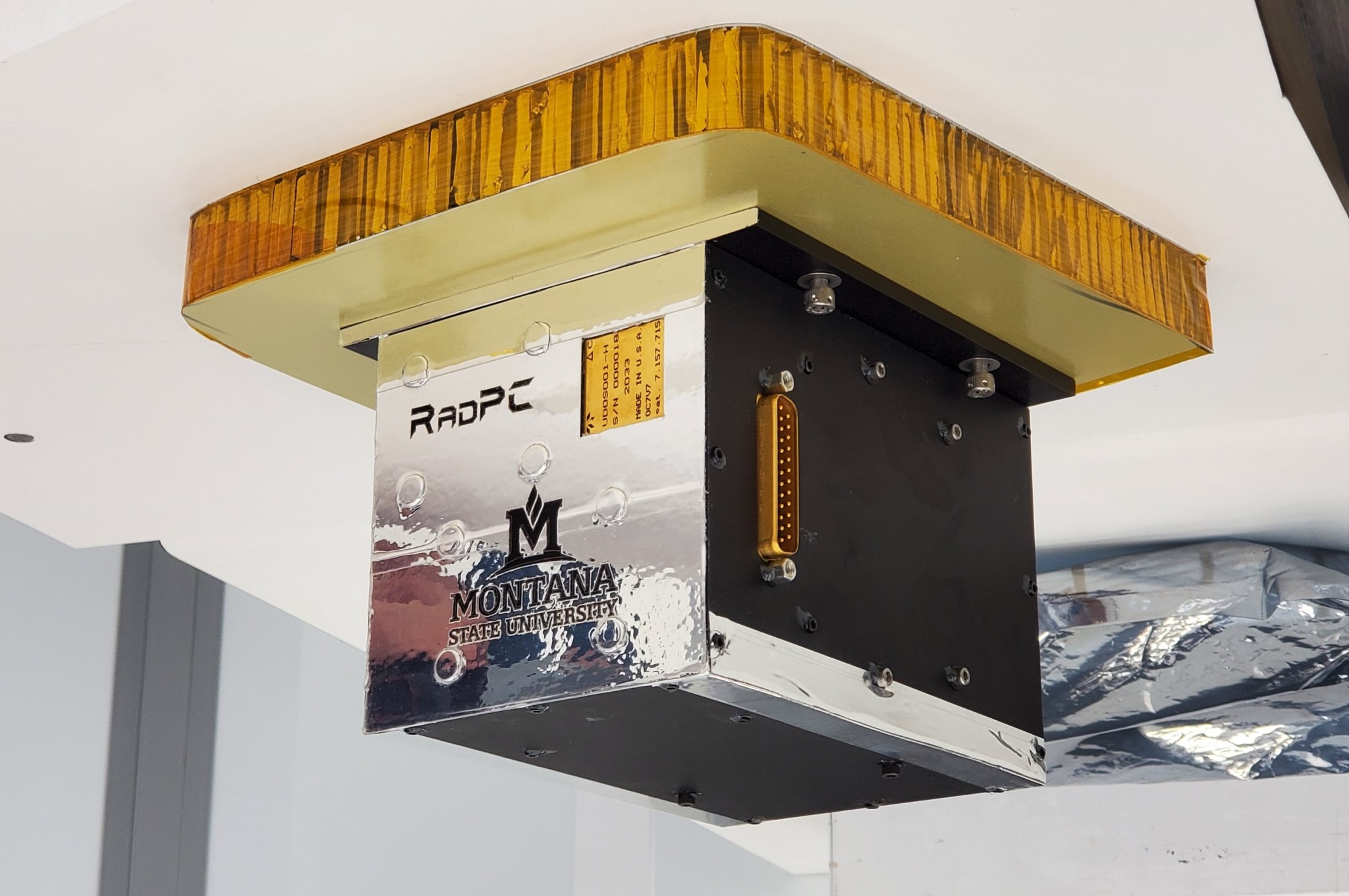NASA has selected 12 student teams to develop solutions for storing and transferring the super-cold liquid propellants needed for future long-term exploration beyond Earth orbit. The agency’s 2025 Human Lander Challenge is designed to inspire and engage the next generation of engineers and scientists as NASA and its partners prepare to send astronauts to the Moon through the Artemis campaign in preparation for future missions to Mars. The commercial human landing systems will serve as the primary mode of transportation that will safely take astronauts and, later, large cargo from…
Read MoreTag: Marshall Space Flight Center
Artemis II Insignia Honors All
Robert Markowitz The four astronauts who will be the first to fly to the Moon under NASA’s Artemis campaign have designed an emblem to represent their mission that references both their distant destination and the home they will return to. The crew unveiled their patch in this April 2, 2025, photo. The crew explained the patch’s symbolism, and its play on the abbreviation of Artemis II to AII, with the following description: The Artemis II test flight begins when a mighty team launches the first crew of the Artemis generation.…
Read MoreUnderstanding Cosmic Explosions: StarBurst Arrives at NASA for Testing
From left to right, NASA Marshall engineers Carlos Diaz and John Luke Bili, U.S. Naval Research Laboratory mechanical engineer contractor Eloise Stump, and Marshall engineers Tomasz Liz, David Banks, and Elise Doan observe StarBurst in the cleanroom environment before it’s unboxed from its shipping container. The cleanroom environment at Marshall is designed to minimize contamination and protect the observatory’s sensitive instruments. Image Credit: NASA /Daniel Kocevski StarBurst, a wide-field gamma ray observatory, arrived at NASA’s Marshall Space Flight Center in Huntsville, Alabama, March 4 for environmental testing and final…
Read MoreNASA Science Continues After Firefly’s First Moon Mission Concludes
After delivering ten NASA science and technology payloads to the near side of the Moon through NASA’s CLPS (Commercial Lunar Payload Services) initiative and Artemis campaign, Firefly Aerospace’s Blue Ghost Mission 1 lander captured this image of a sunset from the lunar surface. Credit: Firefly Aerospace After landing on the Moon with NASA science and technology demonstrations March 2, Firefly Aerospace’s Blue Ghost Mission 1 concluded its mission March 16. Analysis of data returned to Earth from the NASA instruments continues, benefitting future lunar missions. As part of NASA’s CLPS…
Read MoreNASA Invites Media to Annual FIRST Robotics Rocket City Competition
2 min read Preparations for Next Moonwalk Simulations Underway (and Underwater) The Rocket City Regional – Alabama’s annual For Inspiration and Recognition of Science and Technology (FIRST) Robotics Regional Competition – is scheduled for Friday, March 14, through Saturday, March 15, at the Von Braun Center South Hall in Huntsville, Alabama. FIRST Robotics is a global robotics competition for students in grades 9-12. Teams are challenged to raise funds, design a team brand, hone teamwork skills, and build and program industrial-sized robots to play a difficult field game against competitors. …
Read MoreNASA’s Advancements in Space Continue Generating Products on Earth
The cover of Spinoff 2025, NASA’s annual publication that chronicles commercial products born from space technology, is a detailed view of the lunar surface captured by cameras on the Orion spacecraft on a close approach of the Moon during the Artemis I mission. Credit: NASA The latest edition of NASA’s Spinoff publication, which highlights the successful transfer of agency technology to the commercial sector, is now available online. For nearly 25 years, NASA has supported crew working in low Earth orbit to learn about the space environment and perform research…
Read MoreNASA’s Asteroid Bennu Sample Reveals Mix of Life’s Ingredients
In this video frame, Jason Dworkin holds up a vial that contains part of the sample from asteroid Bennu delivered to Earth by NASA’s OSIRIS-REx (Origins, Spectral Interpretation, Resource Identification, and Security – Regolith Explorer) mission in 2023. Dworkin is the mission’s project scientist at NASA’s Goddard Space Flight Center in Greenbelt, Maryland. Credit: NASA/James Tralie Lee esta nota de prensa en español aquí. Studies of rock and dust from asteroid Bennu delivered to Earth by NASA’s OSIRIS-REx (Origins, Spectral Interpretation, Resource Identification and Security–Regolith Explorer) spacecraft have revealed molecules…
Read MoreNASA Invites Media to Expedition 71 Crew Visit at Marshall
3 min read Preparations for Next Moonwalk Simulations Underway (and Underwater) From left, NASA astronauts, Tracy C. Dyson, Mike Barratt, Matthew Dominick, and Jeanette Epps, who served as part of Expedition 71, will discuss their recent missions to the International Space Station during a visit to Marshall Space Flight Center on Jan. 29. NASA NASA will host four astronauts at 9 a.m. CDT Wednesday, Jan. 29, for a media opportunity at the agency’s Marshall Space Flight Center in Huntsville, Alabama. NASA astronauts Matt Dominick, Mike Barratt, Jeanette Epps, and Tracy C. Dyson…
Read MoreNASA Marshall Invites Media to Local Day of Remembrance Event
1 min read Preparations for Next Moonwalk Simulations Underway (and Underwater) NASA Marshall will hold a candle-lighting ceremony and wreath placement at 9:30 a.m. CST. The ceremony will include remarks from Larry Leopard, associate director, and Bill Hill, director of Marshall’s Office of Safety and Mission Assurance. NASA/ Krisdon Manecke NASA’s Marshall Space Flight Center in Huntsville, Alabama, invites media to attend its observance of the agency’s Day of Remembrance at 9:30 a.m. CST Thursday, Jan. 23, in the lobby of Building 4221. Day of Remembrance honors the members of…
Read MoreNASA to Test Solution for Radiation-Tolerant Computing in Space
3 min read Preparations for Next Moonwalk Simulations Underway (and Underwater) The Radiation Tolerant Computer, or RadPC, payload undergoes final checkout at Montana State University in Bozeman, which leads the payload project. RadPC is one of 10 NASA payloads set to fly aboard the next delivery for NASA’s CLPS (Commercial Lunar Payload Services) initiative in 2025. RadPC prototypes previously were tested aboard the International Space Station and Earth-orbiting satellites, but the technology demonstrator will undergo its biggest trial in transit to the Moon – passing through the Earth’s Van Allen…
Read More